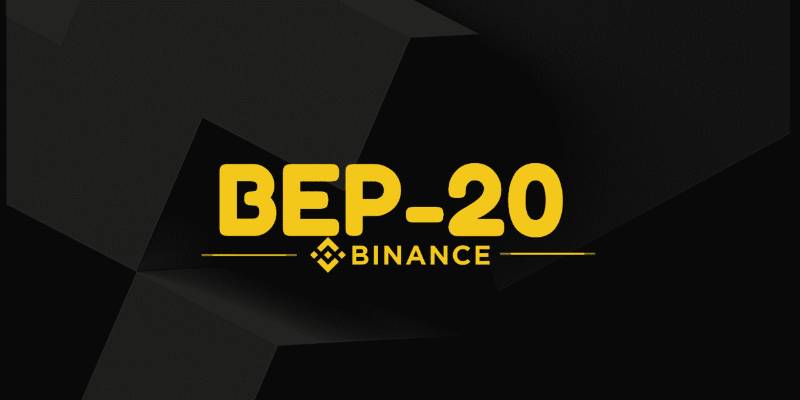1. Introduction & Overview
What is BEP-20?

BEP-20 is a token standard on Binance Smart Chain (BSC), designed to define how tokens behave on the BSC network. It is similar to Ethereum’s ERC-20 standard but optimized for BSC’s high-speed, low-cost blockchain environment.
Key highlights:
- Defines rules for token issuance and transfer
- Ensures interoperability among BSC-based dApps and wallets
- Supports fungible tokens: interchangeable units with the same value
History / Background
- Launched by Binance: BEP-20 was introduced as part of Binance Smart Chain (BSC) in September 2020.
- Inspired by ERC-20: Leveraging Ethereum’s widely adopted ERC-20 token standard for compatibility.
- Goal: Facilitate fast and low-cost transactions for tokenized assets and dApps on BSC.
Why is BEP-20 Relevant in Cryptoblockcoins?
- Enables decentralized finance (DeFi) applications on BSC
- Supports stablecoins, governance tokens, NFTs (fungible layer), and reward tokens
- Critical for cross-chain bridges to Ethereum or other blockchains
- Lowers transaction fees, making microtransactions feasible
2. Core Concepts & Terminology
| Term | Definition |
|---|---|
| Token | A digital asset built on top of a blockchain |
| BEP-20 Standard | Set of rules defining token behavior on BSC |
| Smart Contract | Code deployed on BSC to automate token management |
| Address | Unique identifier for wallets or contracts |
| Decimals | Number of decimal places a token supports (precision) |
| Total Supply | Maximum number of tokens in existence |
| Transfer | Function to move tokens from one wallet to another |
| Approval / Allowance | Permission for a third party to spend tokens on behalf of the owner |
BEP-20 Lifecycle in Cryptoblockcoins
- Token Creation → via smart contract deployment
- Wallet Integration → users can store and send tokens
- Transaction Handling → transfers, approvals, and swaps
- dApp Interaction → DeFi, gaming, staking, lending
- Cross-Chain Operations → bridge tokens to Ethereum (ERC-20) or other chains
3. Architecture & How BEP-20 Works
Components
- Smart Contract: Core logic for token management
- Wallets: MetaMask, Trust Wallet, Binance Chain Wallet
- Blockchain Nodes: Process transactions and validate smart contracts
- dApps: Interfaces for staking, lending, swapping, etc.
Internal Workflow (Token Transfer)
- User A calls
transfer()function - Smart contract checks balance
- Updates balances in contract storage
- Emits Transfer event for transaction logs
- Transaction confirmed on BSC nodes
Architecture Diagram
(Since I cannot provide actual images, here’s a text-based diagram you can visualize or convert to flowchart in tools like Lucidchart or Draw.io)
+------------------+
| User Wallet A |
+--------+---------+
|
v
+------------------+
| BEP-20 Token |
| Smart Contract |
+--------+---------+
|
+--------+---------+
| Ledger / BSC |
| Nodes & Blocks |
+--------+---------+
|
v
+------------------+
| User Wallet B |
+------------------+
4. Installation & Getting Started
Prerequisites
- Node.js & npm installed
- Binance Smart Chain testnet or mainnet access
- Wallet (MetaMask recommended)
- Solidity compiler (Remix IDE or Hardhat)
Step-by-Step Guide to Deploy BEP-20 Token
1. Open Remix IDE
- Navigate to Remix IDE
- Create a new Solidity file:
MyToken.sol
2. Example BEP-20 Token Smart Contract
// SPDX-License-Identifier: MIT
pragma solidity ^0.8.0;
import "https://github.com/binance-chain/bsc-genesis-contract/blob/master/contracts/BEP20/BEP20.sol";
contract MyToken is BEP20 {
constructor(uint256 initialSupply) BEP20("MyToken", "MTK") {
_mint(msg.sender, initialSupply * 10 ** decimals());
}
}
- BEP20.sol contains all standard functions:
transfer,approve,allowance,totalSupply, etc.
3. Compile & Deploy
- Compile contract in Remix
- Connect MetaMask to BSC Testnet
- Deploy with initial supply (e.g.,
1000000tokens)
4. Verify & Interact
- Token appears in wallet
- Use
transfer(),approve(), andtransferFrom()functions to test
5. Real-World Use Cases
| Use Case | Example | Industry |
|---|---|---|
| DeFi Lending & Staking | PancakeSwap, Venus | Finance |
| Stablecoins | BUSD (Binance USD) | Payments |
| Gaming / NFTs | My DeFi Pet tokens (fungible layer) | Gaming / NFT |
| Reward & Utility Tokens | CAKE token | Ecosystem Rewards |
6. Benefits & Limitations
Advantages
- Faster transactions than Ethereum (up to 3s per block)
- Lower gas fees
- Interoperable with Ethereum-based tools
- Widely supported by wallets and exchanges
Limitations
- Centralization concerns (BSC validators controlled by Binance)
- Limited cross-chain compatibility without bridges
- Vulnerable if smart contract is poorly coded
7. Best Practices & Recommendations
Security
- Audit contracts before deployment
- Use tested libraries (OpenZeppelin / Binance templates)
- Implement proper access control for minting
Performance
- Minimize heavy loops
- Optimize storage usage
Compliance
- Follow local regulations
- Ensure token functions do not unintentionally classify as securities
Comparison with Alternatives
| Standard | Chain | Transaction Fee | Speed | Interoperability |
|---|---|---|---|---|
| BEP-20 | Binance Smart Chain | Low (~$0.001) | Fast (~3s) | High (BSC & bridges) |
| ERC-20 | Ethereum | High (~$5–20) | Moderate (~13s) | Very High (ETH ecosystem) |
| TRC-20 | TRON | Low (~$0) | Fast (~3s) | Moderate |
When to choose BEP-20:
- You want low fees + fast transactions
- Project is primarily on Binance Smart Chain
- DeFi integration or token swaps on BSC
8. Conclusion
- BEP-20 is critical for building scalable DeFi and token ecosystems on BSC.
- It is lightweight, fast, and low-cost, making it ideal for mass adoption.
- Future trends:
- Cross-chain interoperability (BEP-20 ↔ ERC-20 bridges)
- Integration with Layer-2 scaling solutions
- NFT fractionalization using BEP-20 standards
Next Steps:
- Deploy your BEP-20 token on Testnet
- Connect it to dApps like PancakeSwap
- Explore staking and reward mechanisms
- Audit and prepare for Mainnet launch